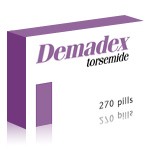Kidney Failure: Understanding the Symptoms, Treatment, and Survival Outlook


Kidney failure, also known as renal failure, is a serious medical condition that occurs when one or both kidneys lose the ability to filter waste products and excess fluids from the blood effectively. The kidneys are vital organs responsible for numerous functions essential to maintaining homeostasis in the body, including waste elimination, electrolyte balance, blood pressure regulation, and red blood cell production. When kidney function deteriorates significantly, it can have life-threatening consequences and typically requires immediate medical intervention.
What Happens When Kidneys Fail?
When kidneys fail, they are no longer able to perform their critical filtering role. This results in the accumulation of toxins, waste products, and excess fluids in the body. Kidney failure can be acute or chronic. Acute kidney failure develops rapidly, often due to trauma, infection, or a sudden drop in blood flow to the kidneys. Chronic kidney disease (CKD), on the other hand, progresses gradually over months or years, usually as a result of conditions such as diabetes or hypertension.
As kidney function declines, various metabolic and systemic complications arise. The body's acid-base balance is disrupted, electrolyte levels (especially potassium and phosphate) become dangerously high, and anemia often develops due to reduced production of erythropoietin, a hormone produced by the kidneys. Fluid retention may cause swelling (edema), particularly in the legs and ankles, and can also lead to high blood pressure or pulmonary edema.
Ultimately, end-stage renal disease (ESRD) is the final stage of chronic kidney failure, where the kidneys function at less than 10% of their normal capacity. At this point, dialysis or a kidney transplant becomes necessary for survival.
What Are the Symptoms of Kidney Failure?
The symptoms of kidney failure can vary depending on the underlying cause and whether the failure is acute or chronic. In many cases, early-stage kidney disease may present with no symptoms, which is why it is often referred to as a "silent disease." As the condition progresses, the following signs may become evident:
- Fatigue and weakness: A common result of the buildup of waste products and the onset of anemia.
- Swelling (edema): Particularly in the feet, ankles, and face, due to fluid retention.
- Changes in urination: This includes frequency, volume, or color changes, such as foamy urine or blood in urine.
- Shortness of breath: Often due to fluid overload or anemia.
- Nausea and vomiting: Caused by the accumulation of waste products (uremia).
- Loss of appetite: Common in advanced kidney failure.
- Confusion or difficulty concentrating: A consequence of toxins affecting the brain.
- Muscle cramps and twitches: Often related to electrolyte imbalances.
- Itching: Resulting from high levels of phosphorus and waste products in the blood.
These symptoms become more pronounced as kidney function worsens, and their presence should prompt immediate medical evaluation.
How Do You Deal With Kidney Failure?
Managing kidney failure involves a combination of lifestyle changes, medications, and medical procedures. The approach depends on whether the condition is acute or chronic.
For acute kidney failure, treatment focuses on addressing the underlying cause — such as dehydration, infections, or blockages — while supporting kidney function during recovery. In many cases, kidney function can return to normal if the underlying issue is promptly treated.
For chronic kidney failure, especially in its later stages, management is more complex. Treatment aims to slow disease progression, alleviate symptoms, and replace lost kidney function when necessary.
Lifestyle and dietary modifications are essential. These may include:
- Reducing sodium and fluid intake to manage blood pressure and swelling.
- Limiting protein, potassium, and phosphorus to decrease kidney workload.
- Managing blood sugar levels in diabetic patients.
- Stopping smoking and reducing alcohol consumption.
Medications are used to control symptoms and complications. These include:
- Antihypertensives for blood pressure control.
- Erythropoiesis-stimulating agents (ESAs) for anemia.
- Phosphate binders and vitamin D analogs for bone health.
- Diuretics to manage fluid retention.
Dialysis is a life-sustaining treatment for end-stage kidney disease. It removes waste and excess fluids using a machine (hemodialysis) or a peritoneal membrane (peritoneal dialysis). Patients typically need dialysis several times a week.
Kidney transplantation is the only curative treatment. A healthy kidney from a donor is surgically implanted into the patient, restoring kidney function. However, not all patients are candidates, and the procedure requires lifelong immunosuppressive therapy.
Can a Person Survive Kidney Failure?
Yes, with proper medical treatment, people can live with kidney failure for many years. Survival depends on the underlying cause, age, general health, and access to medical care. Dialysis and kidney transplantation have dramatically improved survival rates and quality of life for those with ESRD.
For patients on dialysis, survival rates vary. Many live 5–10 years with dialysis, although some live 20 years or more. A kidney transplant significantly increases life expectancy compared to dialysis, particularly when the kidney comes from a living donor.
However, without treatment, kidney failure is fatal. The accumulation of waste products and fluid overload will eventually lead to cardiac arrest, coma, and death. This is why early detection, lifestyle changes, and adherence to treatment are crucial.
The Role of Demadex in the Treatment of Kidney Failure
Demadex, the brand name for torsemide, is a loop diuretic commonly used in the management of fluid retention (edema) associated with kidney failure, heart failure, and liver disease. It works by inhibiting sodium and chloride reabsorption in the loop of Henle in the nephron, promoting diuresis — the excretion of water and salts.
In kidney failure, especially when the kidneys still retain some filtering ability (non-dialysis patients), Demadex can be used to manage volume overload. This helps reduce blood pressure, alleviate swelling, and relieve symptoms like shortness of breath due to pulmonary congestion.
Compared to other diuretics like furosemide (Lasix), torsemide has a longer half-life and better oral bioavailability. Some studies suggest it may be more effective in patients with reduced renal function, although the response to any diuretic can diminish as kidney function worsens.
Despite its benefits, Demadex must be used with caution. Overuse can lead to dehydration, electrolyte imbalances (especially low potassium and magnesium), and worsening kidney function. Monitoring blood chemistry is essential during treatment.
In dialysis patients, diuretics are less effective and often discontinued, but in earlier stages of CKD or in acute settings, torsemide remains a valuable part of symptom management.
Final Thoughts
Kidney failure is a complex and serious condition requiring comprehensive management and lifestyle adaptation. With timely intervention and the right treatment strategies, including medications like Demadex, many individuals can maintain a good quality of life. If you or a loved one is facing kidney issues, it’s vital to work closely with healthcare providers to monitor kidney function, control risk factors, and choose the most appropriate therapies.
Medically Reviewed by Dr. Rabeea Aboufakher, MD
(Updated at May 21 / 2025)

